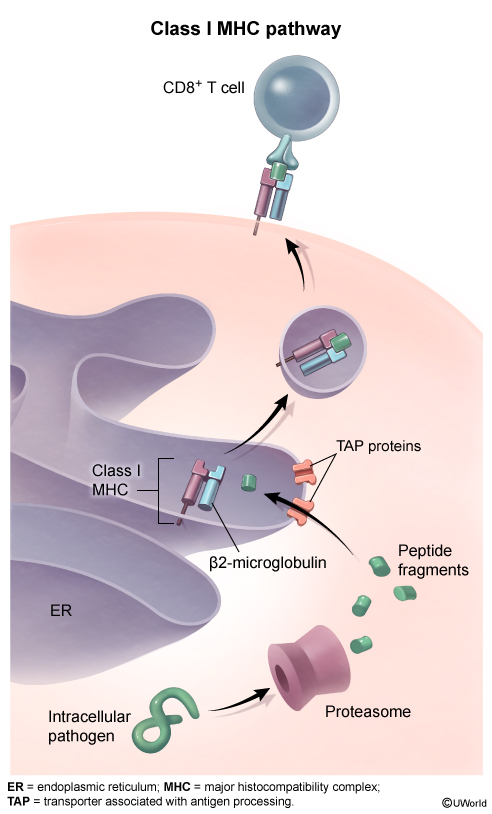Major Histocompatibility Complex (MHC)/Human Leukocyte Antigen (HLA)
Article Sections
Introduction
The major histocompatibility complex (MHC) (known as human leukocyte antigen [HLA] in humans) plays a central role in adaptive immunity by allowing antigenic peptides to be presented to T lymphocytes. MHC molecules provide a molecular signature of "self" and are essential for immune surveillance and tolerance. Located on chromosome 6, the corresponding genomic region is one of the most genetically diverse regions and influences susceptibility to infection, autoimmune disease, and transplant outcomes. MHC molecules are broadly categorized into class I and class II, each with distinct cellular distributions, structures, and functions.
Molecular structure and function
MHC class I molecules (Figure 1) are expressed on the surface of all nucleated cells and consist of a heavy alpha chain paired with beta-2-microglobulin. The MHC class I pathway typically processes proteins that are found in the cytoplasm, including damaged cellular and viral proteins. This pathway is especially important for facilitating the identification and destruction of
Continue Learning with UWorld
Get the full Major Histocompatibility Complex (MHC)/Human Leukocyte Antigen (HLA) article plus rich visuals, real-world cases, and in-depth insights from medical experts, all available through the UWorld Medical Library.
Figures

